
When a movie isn’t funny, you should laugh at it. Unfortunately, “Finding Nemo” doesn’t lend itself to that. You can’t argue with a regular cartoon’s box office of $340 million, a first in film history. You have to find something to love about it. Maybe Willem Dafoe’s voice for one of the overly talkative fish, which, at least in the dubbed version, isn’t audible. Absentee love never rusts. And, of course, you have to love the little ones. It was all made for them, and apparently, in America, they have a lot of escorts to the cinema. Besides grandparents, there’s also a chauffeur, nanny, and some kind of teacher. An ichthyologist. Otherwise, you wouldn’t understand where all that crazy money came from.
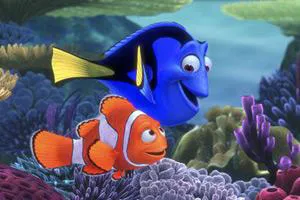
Of course, this doesn’t take away from “Finding Nemo’s” fabulous technique, fabulous colors, and fabulous cuteness. Director Andrew Stanton (“Monsters, Inc.”) didn’t waste the $94 million budget. The computer managed to combine all the advantages of puppet and drawn cartoons. Where needed – the illusion of volumes and depths, convexity and concavity; where not needed – quite picturesque faces of fish, birds, and plankton. You just want to walk on the sandy ocean floor. It’s all so luminous, golden, the soul sings, anemones bloom.
Story and Characters
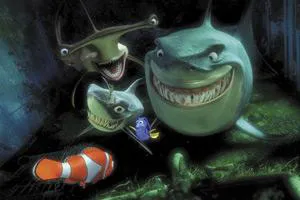
Andrew Stanton, as everyone already knows, placed a combination of the Gingerbread Man and Tom Thumb in the ocean depths, like Ivan the Fool going after a miracle, or the Grey Neck and the Frog-Traveler. It’s all very traditional, but modernized in a strange, deeply American way. Papa-fish and Mama-fish spawned eggs and rejoiced that they had found a wonderful “mansion with a view,” but a shark swam up and ate everyone while Papa fainted. Only one egg remained, which he later nurtured, raised, and named Nemo in memory of Mama. But, even though they were clownfish, nothing but safety precautions are foreseen. Nemo wanted to go to school, Papa was afraid for him. A large stingray on its back finally took the children to the Great Barrier Reef (the action takes place in Australia), a boat was floating there, and Nemo was immediately kidnapped by a scuba diver. Papa swam after him.
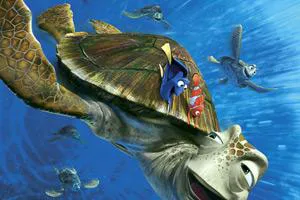
Target Audience and Humor
It’s probably interesting for kids to look at how it all swims there. You can almost hear Grandma’s voice: “Look, this is a seahorse, this is a flounder, and this is a pristipoma.” It will also be exciting for the little ones to see how other children get their teeth treated. The man who kidnapped Nemo was a dentist, and the aquarium was in the dental office. The main event in the lives of the fish there was arguing about what material the dentist used for filling the canal. A pelican that periodically flew in to visit joined the arguments. The pelican is okay. Birds, it turns out, are generally wittier than fish.
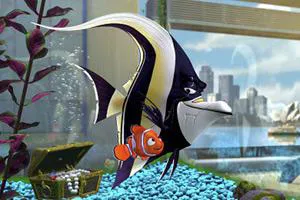
There will be a hint of something funny in a couple more places. When Papa ended up with vegetarian sharks on a sunken submarine, when he met a senile fish, and when they met the pelican surrounded by evil seagulls. “Mine. Mine. Mine,” the seagulls insisted, narrowing the ring around the half-dead fish, and the clever pelican suggested that the latter sit quietly in its beak. The beak was big, and they had already swum in the belly of a whale. It’s also more or less cool when Nemo was flushed down the toilet. All pipes lead to the ocean. It’s surprising that the Americans’ admiration for their physiology and corporeality didn’t extend to their contents.
Themes and Conclusion
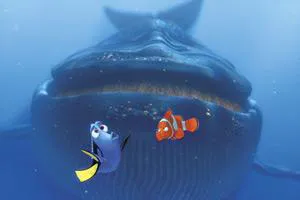
The whole fairy tale is permeated with ecological, vegetarian, and family-value motifs. For a healthy lifestyle without conflicts and bad habits. A gallop through the oceans, several exotic beauties and attractions, a family reunion, and you are completely happy. Or maybe the Americans were drawn to the infantile cuteness of “Finding Nemo” out of fear that adult life regularly requires various cerebral functions, not limited to demonstrating the state of their teeth.
And nothing else is close to them.